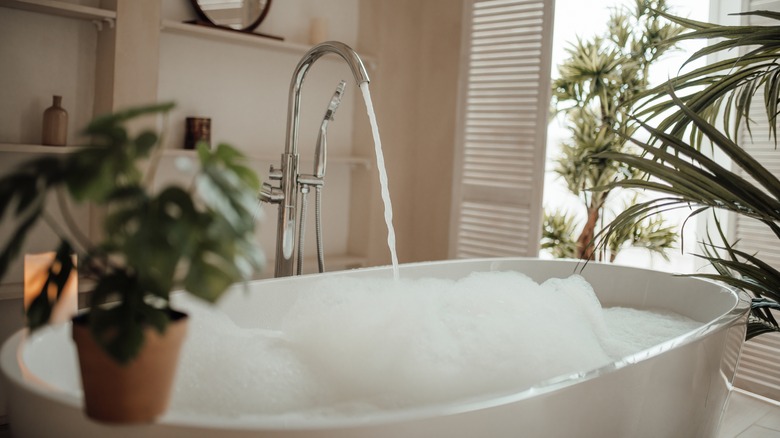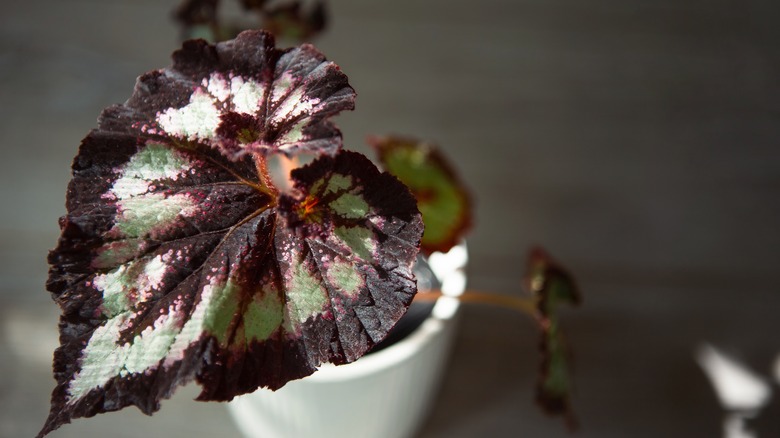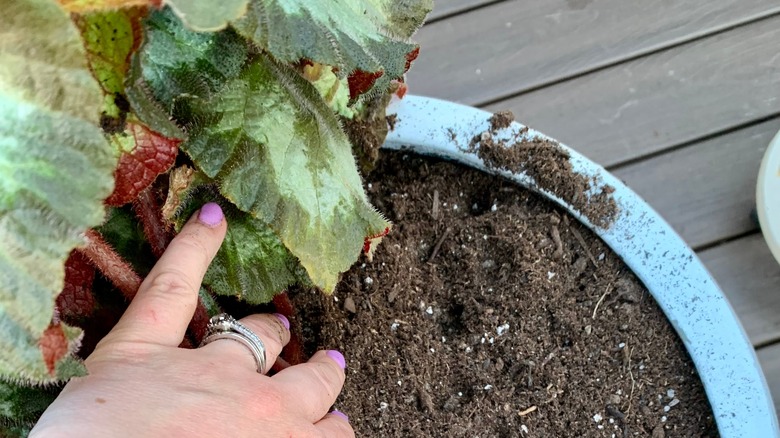Grow This Easy-To-Care-For Plant In Your Bathroom And Watch It Thrive
Few people think of their bathrooms as the ideal habitat for a plant to thrive. And yet, bathrooms boast conditions that make up the perfect ecosystem for the right type of vegetation. Crucially, they're humid and usually devoid of as much direct sunlight as other parts of the house receive. These conditions make it ideal for moisture-loving tropical plants like Begonia Rex (known simply as begonia) to grow.
Begonias are herbaceous perennials with ornate, speckled leaves. They're native to South, East, and Southeast Asia, but are widely grown as perennials in the U.S. in USDA zones 10 through 12 — the warmest parts of the nation. However, begonias make excellent houseplants regardless of where you live. And as far as indoor plants go, they're an excellent candidate for beautifying your bathroom too, with little effort. Not only are these gorgeous plants relatively easy to take care of, but they'll actually thrive in most bathrooms' natural environment.
How to care for begonias in your bathroom
Begonias will thrive provided they have the right lighting, temperature, humidity, and watering conditions — most of which are incredibly easy to create in a bathroom. The frosted glazing that most bathrooms have caters well to begonias' preference for bright, indirect sunlight. So, if you have a frosted window in your bathroom, you can safely place the plant anywhere near it. If the glass is clear, then it's best to move the begonia out of direct light. Likewise, be sure not to keep begonias too close to the window if the sill gets very cold during the chillier months. As a general rule, most begonia varieties don't like temperatures that dip below 60 degrees F.
Humidity is also abundant in bathrooms, which makes the environment naturally appealing to begonias. These plants grow best when the relative humidity reaches 50% or higher, so the steamier your showers, the more these plants will adore you. Despite their yearning for atmospheric moisture, begonias don't like having water directly on their leaves or getting too much of it in their soil. Soggy, poorly drained soil can destroy these shrubs quickly because it causes their roots to rot. Thus, only water your begonias when the top of the soil has dried out. Likewise, don't mist them, as this encourages the emergence and spread of powdery mildew.
Protect your begonias from pests and disease
Root rot and powdery mildew are both promoted by excessive watering or getting water on the foliage. That said, begonias are also frequent victims of mealybug infestations. These slow-moving, puffy white critters multiply quickly and cover the plant's stems and leaves in their sticky, waxy residue. They also drink sap and eat various parts of the plant, which stunts its growth and eventually leads to death. If you've discovered mealybugs on your begonia, massage the affected part of the plant with a rubbing alcohol-soaked cotton swab (spraying it with a soapy water mixture is a more effective treatment against a mealybug infestation that has spread to all parts of the begonia).
Aside from these pesky little pests, begonias can also fall prey to scale, nematodes, white flies, the broad mite, and the Begonia mite. Each of these critters requires its own type of treatment, so you'll need to identify the offending creature and destroy it with a targeted approach. This may sound like a lot of trouble, but you can adopt a few strategies for keeping your bathroom-dwelling begonias pest-free. For starters, plant the begonias in new, clean soil to avert the chances of insect eggs being there and eventually hatching. And crucially, keep the plants clean and remove dead leaves often. This way, you're not leaving piles of decomposing organic matter to attract various creepy-crawlies.


